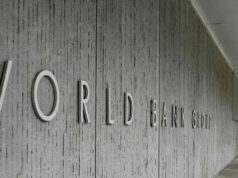THE Institute of International Finance (IIF) expects capital inflows to emerging markets to exceed the trillion-dollar mark, despite global protectionism risk and looming overseas monetary policy tightening.
The IIF said that it expects non-resident capital inflows to emerging markets to rise to $1.1 trillion in 2017 and $1.2 trillion in 2018 — which would be equivalent to 4% of emerging markets’ gross domestic product (GDP).
This would be an improvement from the $763 billion in emerging markets (EM) inflows last year, which accounted for about 2.9% of GDP.
Portfolio debt inflows are expected to rise to $242 billion, doubling from the $102 billion recorded a year earlier, as well as “other investment” inflows, which are largely banking-related, to $293 billion, from $112 billion in 2016.
However, the IIF revised its 2017 foreign direct investment (FDI) forecast to $467 billion from $520 billion.
“The exception was a fourth yearly decline in FDI flows, to $467 billion, probably due to the lagged impact of falling commodity prices, protectionism and onshoring — a concern as FDI had been a very stable component of otherwise volatile capital flows to EMs,” IIF said in its report released yesterday.
It also noted uncertainties about the future of the US tax regime, offshoring and rising competition for FDI.
IIF said that the US Federal Reserve’s unwinding of assets and a looming rate hike pose challenges for EM inflows.
“Geopolitical risks remain elevated, and hot spots such as North Korea could escalate further to threaten a disruption of shipping and other commercial activity with negative fallout for the global economy,” it added.
For the group of countries it called the Asia Six — India, Indonesia, South Korea, Malaysia, the Philippines and Thailand — foreign capital inflows are expected to rise to $240 billion this year from around $140 billion in 2016.
This is because efforts to encourage residents to invest and lend abroad to mitigate upward pressures on currencies from a surplus in its balance of payments position, IIF said.
However, overseas central bank policies are noted to stand as immediate risks to the outlook.
If the Fed and European Central Bank continue with a hawkish stance, investors will turn more risk-averse.
“This could mean abrupt repricing in global bond markets, hitting in particular non-resident portfolio debt flows to EMs, which have been running at multi-year highs on the back of record bond issuance.” — Elijah Joseph C. Tubayan



